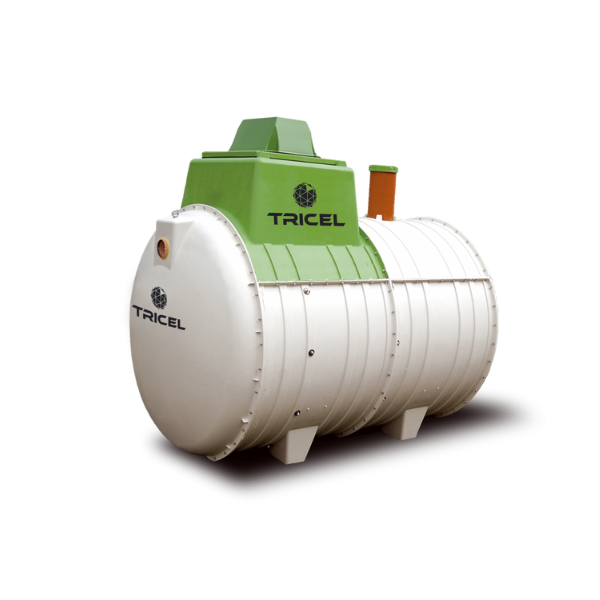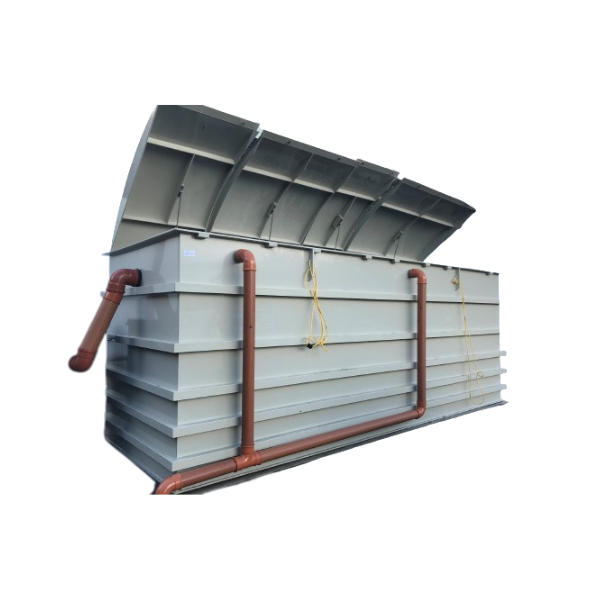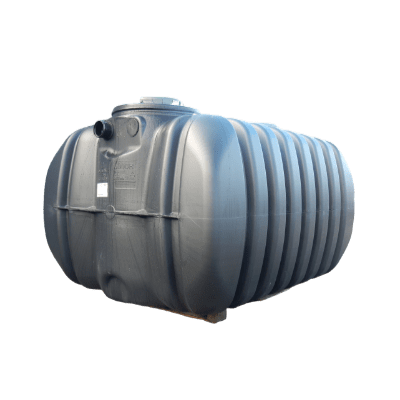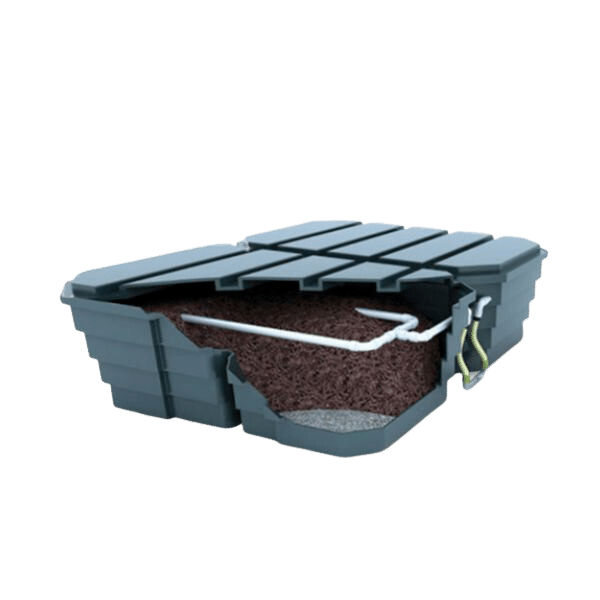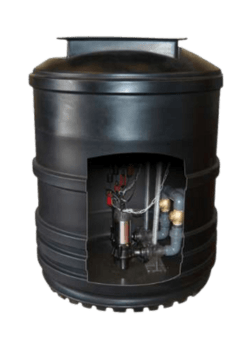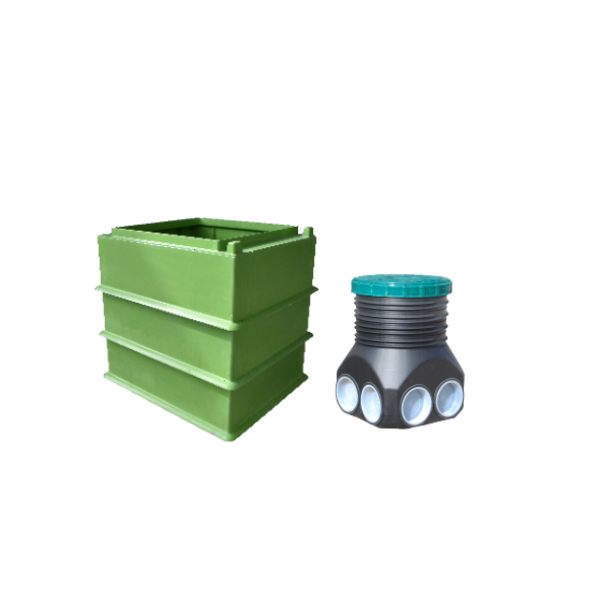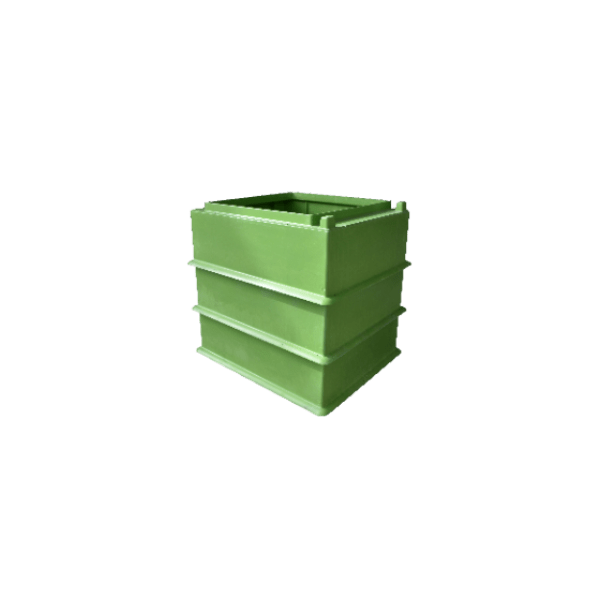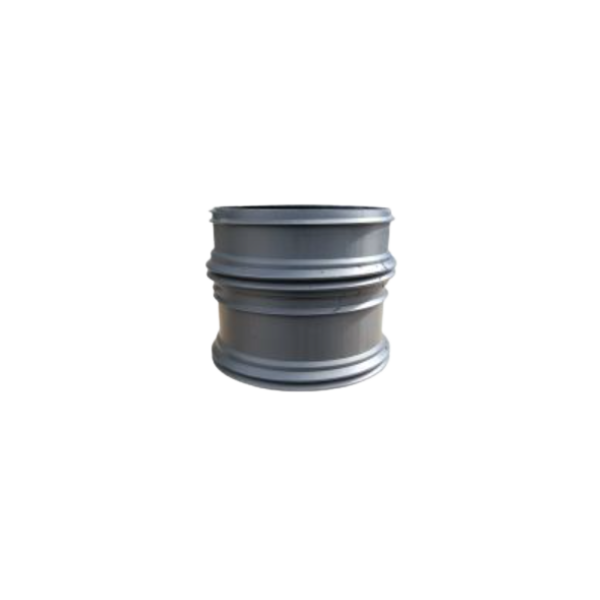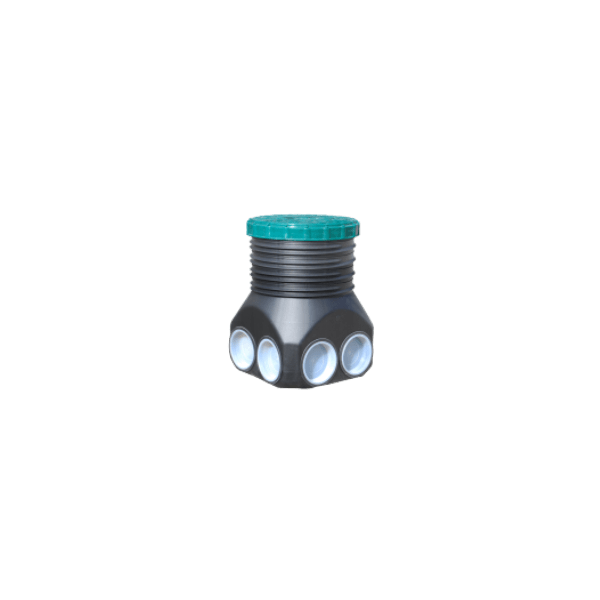SEWAGE TREATMENT
Sewage Pumping Stations by Tricel
OVERVIEW
SEWAGE PUMPING STATIONS KEY BENEFITS:
• Robust and durable solution
• Manufactured from Sheet Moulding Compound (SMC)
• Suitable for domestic and light commercial applications
• Fitted with a control float
• From 1,000-litre and 1,600-litre standard domestic pump stations
• From 2,600 to 4,000 litre commercial pumping tanks
The Tricel packaged sewage pumping stations contain:
• Underground tank made from GRP (glass reinforced plastic)
• Inlet point
• Outlet point
• Submersible pump
• Control panel and alarm
If you have any questions, feel free to call us or use our quote form
To speak to one of our agents online, click here
To find a technician in your area, visit our page
HOW DO SEWAGE TREATMENT PLANTS WORK?
Pumping chambers contain a chamber, pump, pump controls, float and / or an alarm, based on individual requirements. Multiple and back-up pumps are also available.
The pump process is controlled with the use of control float which are set to turn on and off at predefined levels for absorbing a specific volume of effluent per dose.
Our Sewage pumping stations are designed to meet building regulations, including Document H1 (“Foul Drainage”). This stipulates that:
“Where foul drainage from a dwelling or building is to be pumped, the effluent receiving chamber should be sized to contain 24 hours inflow to allow for disruptions due to power failures or breakdown. The minimum daily discharge of foul drainage should be taken as 150 litres per day per person for domestic use.”
For a single domestic dwelling, the Tricel domestic pumping system (sewage pumping stations) is used primarily for the transfer of sewage from:
- A dwelling to a Tricel Sewage Treatment System at a raised location
- A single house in an estate which is lower than the main pumping station in the estate
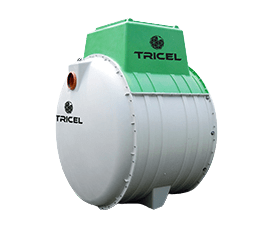
Custom-designed sewage pumping stations
Dual pumps are also available upon request -in case one of them fails- along with custom-designed pumping stations. Indeed, at Tricel, we also design tailored sewage pumping stations to suit our customers’ specific requirements in terms of:
- Volume of inflow
- Dual or single pumps
Tricel pumping chambers may be supplied with a backup pump in case of pump failure. In this case, the two pumps would alternate by all means of a flip-flop control panel to prolong the lifespan of the pumps. These systems are fitted with non-return valves.
- Tank dimensions/capacity
The tank can be bigger depending on the end use of the station: for a single dwelling or a small estate, for example.
- Electrical connections available
- Pumping distance/height
The discharge point can be at a higher level sometimes, e.g. main sewer, percolation area, etc.
Installation and Maintenance of Sewage Pumping Stations
Caution must be taken when installing a commercial sewage treatment pumping station. They are best lifted by a machine and webbing lifting straps – do not use chains or wire ropes in contact with the tank. Ensure the tank is empty as well.
Besides, like any standard sewage treatment plant, a professional should maintain and service a commercial pumping station at least once a year. It is also strongly advised to perform some routine procedures and checks.
REQUEST A QUOTE
Ask for a free quote today by clicking the link below
CONSULT THE BROCHURE
Learn more about the Tricel Sewage Pumping Stations
Packaged Pumping Solutions
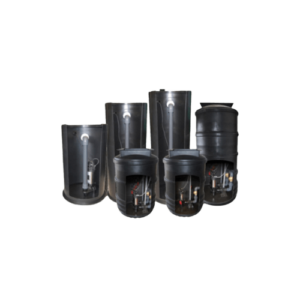
Tricel also offers a range of single and twin pump chambers from 300L (single option only) to 1,700L (single and twin pumps available).
These packaged pump chambers are used primarily for the transfer of sewage. These are ideal for single or multiple domestic dwellings.
key features
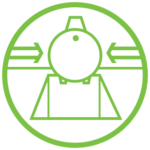
CUSTOM-DESIGNED
At Tricel, we also design tailored sewage pumping stations to suit our customers’ specific requirements.

ROBUST
Our sewage pumping stations are highly durable as they are manufactured from GRP (Glass Reinforced Polyester).

CERTIFIED
We manufacture 1,000-litre and 1,600-litre standard sewage pumping stations following the building regulations.
Recent Projects

Tricel manufacture deliver & install sewage treatment plants across a wide range of industry sectors throughout Ireland & the UK. Tricel also provide import/export services for our international clients. Top quality material offers outstanding capabilities including long life, durability and is a cost-effective solution for sewage treatment even in the harshest environments.
Tricel has installed many of its Tricel Novo Sewage Treatment Plants across the UK.
Check some of our projects by clicking on the button below.
50 YEARS IN BUSINESS
A highly successful multinational corporation with over 50 years’ valuable industry experience
LARGE RANGE OF SEWAGE PUMPING STATIONS
Pumping stations available for all capacities, for domestic and commercial needs.
FAST DELIVERY
On-time delivery is a core requirement of our successful business operations
Frequently Asked Questions
A cesspool is a simple storage vessel with an inlet and no outlet. It’s a sealed storage vessel; all the water coming in stays within the tank. The advantage is it doesn’t need an outlet. The disadvantages are: there is no treatment, the tanks are huge, and it needs regular emptying. Everything which has gone in must be sucked out. Ideal for sites which have got very infrequent use (Sheppard huts, for example).
A septic tank has an inlet and an outlet; it’s a simple overflow system. See how a septic tank works here. The advantages of the septic tank are there is no mechanic and no electricity requirement for it to work. The disadvantages are you are discharging dirty water, and untreated sewage effluent, as a tiny breakdown has occurred in the tank. You can only release water to a drainage field for the water to go through the subsoil to treat the water.
A sewage or package treatment plant has an inlet and an outlet; the wastewater is treated inside the tank. Aeration is provided inside the tank for the aerobic bacteria to feed on the waste and remove it from the liquid. The advantages are the wastewater is treated and can be discharged to a watercourse.
Many package treatment plants are available on the market:
- Trickles filters
- Rotating Biological Contactors (RBC)
- Mobile media bio-reactors
- Activated Sludge systems
- Sequence Batch Reactor systems (SBR)
- Fixed Bed Systems (like the Tricel Novo)
Domestic wastewater is all wastewater generated inside the house, including grey water from sinks, showers, baths and sewage from toilets. Rainwater is not classified as greywater and should be directed to a soakaway.
A trial hole can be dug during the site assessment and left open for 48 hours to determine this. The ground level is used to measure the water level.
After the water is discharged, it must flow into a drainage field or a running watercourse. It will fail and block up very quickly whenever it is released directly into the ground. It will also violate the government’s General Binding Rules for small sewage discharges—more information on this page.
Get in touch
